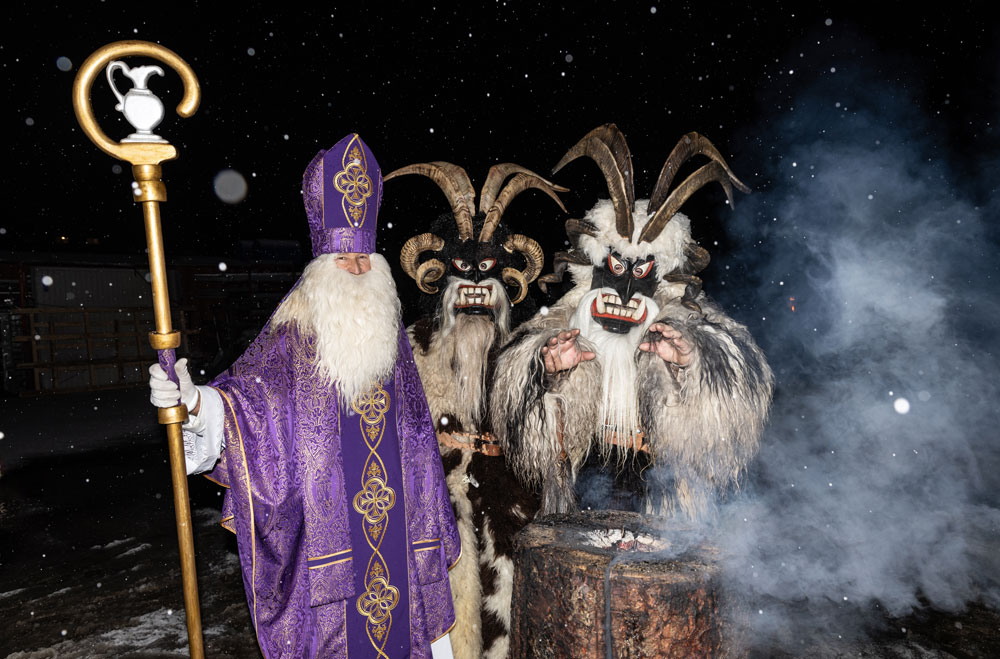The roots of Krampus can be traced back to pre-Christian traditions in Alpine Europe. It is linked to pagan winter solstice celebrations and rituals that aim to drive away the winter spirits. With the spread of Christianity, the Krampus tradition became intertwined with Christian beliefs.
The night before St. Nicholas Day, December 5th, is traditionally known as Krampusnacht or Krampus Night. On this night, Krampus roams the streets with Saint Nicholas, punishing misbehaving children with a switch made of twigs. He is often depicted as a hairy, horned creature with cloven hooves. His appearance can vary, but common elements include a long, pointed tongue, chains, and a basket or sack to carry away naughty children. The chains are symbolic of Krampus’ power to bind and restrain, while the bells are thought to ward off evil spirits. Some depictions show Krampus using chains to capture misbehaving children.
In some Alpine regions, particularly in Austria and parts of Germany, there are Krampuslaufs or Krampus runs. During these events, people dressed as Krampus roam the streets, frightening onlookers and sometimes engaging in playful mischief. In New Orleans, the Krewe of Krampus much every year through the Bywater neighborhood. This year’s NOLAuf parade “rolls” at 7:30, beginning at Perleaux Beer Lab along Royal Street, turning at Independence, and continuing down Burgundy until turning left at Piety to end on Royal.

